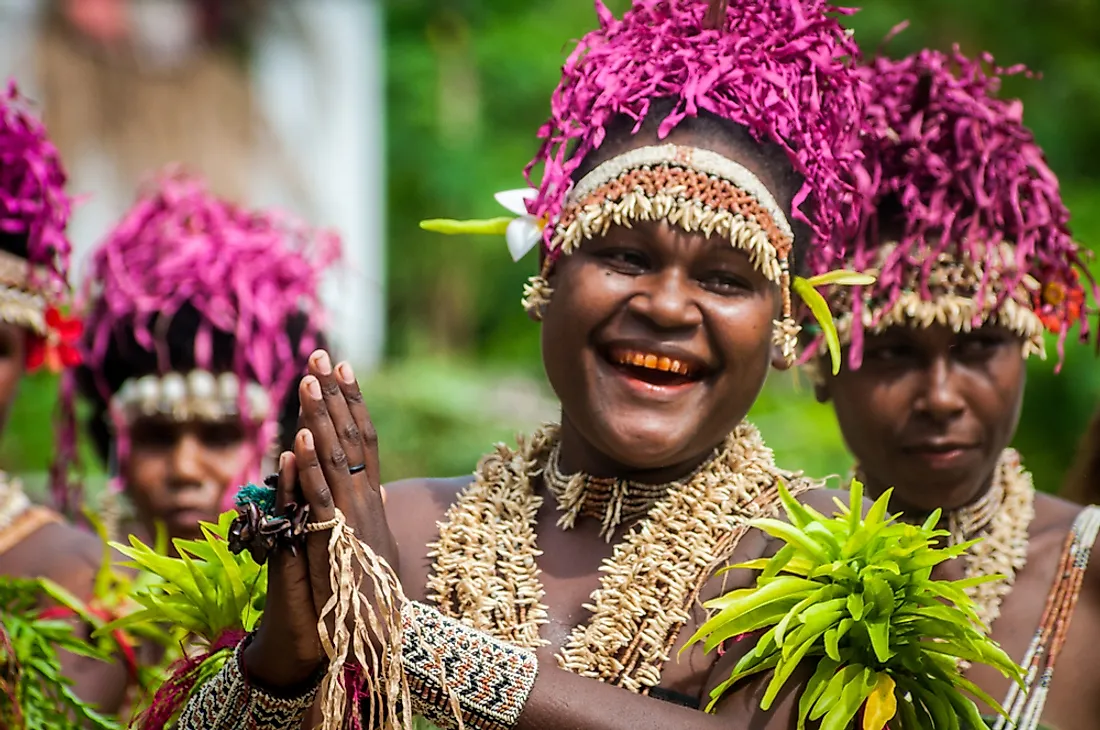The Culture Of The Solomon Islands

The sovereign island country of the Solomon Islands hosts a population of around 660,121 individuals. The archipelagic country has six major islands and more than 900 smaller islands. Honiara, the capital city and seat of the government, is located on Guadalcanal Island's northwestern coast. People of Melanesian descent comprise 95.3% of the country’s populations. The rest of the population comprises of Micronesians and people of other ethnic groups. More than 120 indigenous languages are spoken in the Solomon Islands. Melanesian Pidgin serves as the lingua franca in the country. Although English is the official language, it is spoken by only a small percentage of the population. Nearly the entire population of the Solomon Islands comprises of Christians with 73.4% of the population practicing Protestantism and 19.6% practicing Roman Catholicism.
5. Cuisine of the Solomon Islands
The cuisine of the country reflects influences from a variety of Oceanian, Asian, and European cuisines. The Spanish and the English who ruled in the country left their own culinary marks. The spice trade from Asia also added to the richness of the country’s cuisine. Coconuts are an integral part of the cuisine. Flesh, water, and milk of the coconut are used in preparing numerous dishes. Cassava, taro, and sweet potatoes are important sources of carbohydrates. A variety of fruits and vegetables are also consumed. Fish is the primary source of protein in the diet. Frying, boiling, and baking are some of the most commonly used cooking techniques. Breadfruit is served with many dishes. Poi is a dish made of fermented taro roots and is served with fish or chicken during celebratory feasts.
4. Literature and Graphic Arts in the Solomon Islands
Written literature developed on the islands as recently as the 1960s in the context of the development of the Pacific Islander literature in the Pacific region as a whole. John Saunana and Celo Kulagoe are notable writers from the country.
A growth of tourism in the Solomon Islands has encouraged a thriving craft industry. Stone carvings, weaved baskets and bags, tribal jewelry, indigenous pottery, etc., are some of the traditional handicraft items that cater to the thriving souvenir markets in the country.
3. Performance Arts in the Solomon Islands
Music, songs, and dances are an integral part of the country’s culture. Folk songs and dances are performed during traditional ceremonies. Many of the islanders are natural song composers. Both group and solo vocals are common forms of traditional Melanesian performances. Slit-drums and panpipe ensembles produce the music. Panpipe orchestras are highly popular. The youth of the country today also listen to various kinds of reggae, pop, and rock music.
2. Sports in the Solomon Islands
Sport is an important part of the culture of the Islanders. A large number of games like cricket, football, rugby, horse racing, etc., are popular in the country. The nation has highly successful national association football, beach soccer, and futsal teams, regarded as among the best in Oceania.
1. Life in the Society in the Solomon Islands
Traditionally, the roles of men and women in society were well-defined. Women were expected to execute the household duties and tend to the children. They also did some agricultural work like planting and weeding the fields. Men were involved in the more labor-intensive tasks like hunting, fishing, construction, clearing areas for agriculture, etc. Over time, however, with the spread of education, interactions with the outside world, and the creation of jobs, the traditional roles got blurred. Today, both men and women engage in jobs outside the homes and women serve as doctors, lawyers, engineers, etc., just like the men. Traditional mindsets, however, linger on in some rural areas.
In the past, marriages were arranged to ensure communal or social compatibility between the married partners and their families. Intra-clan marriages were a taboo. A bride price was usually paid by the groom’s family to the bride’s family as a kind of compensation for the loss of a family member. Today, the situation has greatly changed and romantic relationships are often the reason for marriage. Blessings of the family are then sought by the couple. Cases of cohabitation without marriage is also on the rise but is still frowned upon by society.
Family ties are very important in the life of people living in the Solomon Islands. Extended families are more common than nuclear ones. Children are brought up by the parents with help from members of the extended family. Infants are highly pampered and usually not left with members outside the family. Men often take critical decisions related to family matters and finances but women also advise in the background.
Both patrilineal and matrilineal systems of inheritance can be seen in the Solomon Islands. The rules vary by ethnic groups and clans. These differences are usually taken into account while making laws and giving judgments.
Respect for the elders is an inherent part of the etiquette in the Solomon Islands. When men speak to women who are non-related, they are expected to look away as a show of respected. Girls are taught to be wary of strangers. The Islanders are known to be good hosts. They welcome guests to their home and provide them with the best food.











